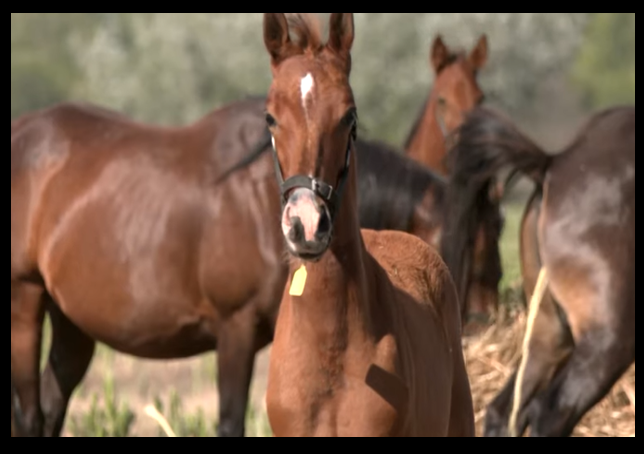Scientists have already experimented with using CRISPR to generate enhanced cattle, pigs, sheep, rabbits, and goats

I recently described how innovative gene-editing technology had led to the creation of the “wolly mouse” and a dire-wolf/gray wolf blend in an attempt to revive species that went extinct over 10,000 years ago.
Now scientists are using the technology to improve traits in domestic animals. Argentina’s scientists have recently achieved a groundbreaking milestone in genetic engineering by creating genetically altered “super horses.”
These horses are designed to enhance traits such as speed, strength, and agility, potentially revolutionizing equestrian sports like horse racing and polo. Scientists started by using the genes from one of the nation’s famous polo horses.
Argentina’s award-winning mare Polo Pureza will have her genes, or at least most of them, live on in five genetically edited horses designed to outrun the polo legend herself.
Scientists at Argentine biotech firm Kheiron have produced the world’s first genetically edited horses using a technique called CRISPR-Cas9. The horses were born last October and November.
“We design their genome before they are born,” said Gabriel Vichera, co-founder and scientific director of Kheiron. “We do this by using the so-called genetic scissors techniques, which are molecular tools that allow us to go to any region of the genome, make a precise cut and be able to make a change in that genome.”
Polo Pureza, whose name translates from Spanish as “Polo Purity,” was inducted into the Argentine Association of Polo Horse Breeders Hall of Fame.
Researchers in Argentina used CRISPR (Clustered Regularly Interspaced Short Palindromic Repeats) gene-editing technology to modify the DNA of horses. This technique allows precise alterations in specific genes, such as the MSTN gene, which regulates muscle growth. By tweaking this gene, scientists aim to produce horses with enhanced muscle development for faster sprinting and greater explosive speed.
They edited the genes to increase speed, but all the while keeping the champion horse’s other qualities.
“We identify some sequences in a specific gene related to how the animals’ musculature develops in the genome of another animal, let’s say another mare. There are certain muscle fibers that give more explosiveness, a quicker contraction, and the animal can have a greater initial speed.”
Vichera said the horses all comply with Argentina’s current regulations and do not count as genetic doping or genetically modified organisms.
“We are not inventing anything artificial; we take that natural sequence and introduce it into another natural horse, which is what nature does, but we do it faster and more directed. So, when you see the horses in the field, they are absolutely natural.”
I live close to Del Mar, California, and have often attended horse races there. In fact, I won some serious money betting on American Pharaoh during a race one year. I can hardly imagine what races will be like when every horse is a Secretariat.
On this Kentucky Derby day, here’s your reminder that Secretariat was faster than any horse you’ll see today. The year is 1973 and this is his track record run. Untouched for over 50 years. The GOAT.
pic.twitter.com/56TrkQV67M
— Super 70s Sports (@Super70sSports) May 4, 2024
Genetic scientists are working toward using the same technology to give other domestic animals could be genetically modified traits as well.
Some of the potential applications include modifying wheat molecules to make crops more resistant to heat, or changing the genomes of cows to make their mile more protein-rich. It’s even been suggested pig DNA could be altered to make their organs more similar to human organs, expanding the possibilities for transplants.
A report in Forbes Brazil referred to the development as “an unprecedented milestone in biotechnology for its potential impact on agriculture, veterinary medicine, and other sectors of genetic improvement.”
In fact, such experiments have been done with mixed results.
Scientists have already experimented with using CRISPR to generate super-muscly cattle, pigs, sheep, rabbits, and goats. These studies have not had perfect results. Many of the animals didn’t survive infancy. And a lot of them had weirdly large tongues.
Research in fish is also well underway. Using CRISPR to target the myostatin gene, scientists in Japan have generated red sea bream that are bigger and heavier, with 17% more muscle than their unmodified counterparts, despite being fed the same amount of food.
In fact, in the US, the Food and Drug Administration approved the sale of gene-edited pork in 2023.
And similar approaches have been used to beef up carp, tilapia, catfish, and other aquatic animals, including oysters. Other researchers are experimenting with different ways of using CRISPR to boost disease resistance or create salmon that make more omega-3.

